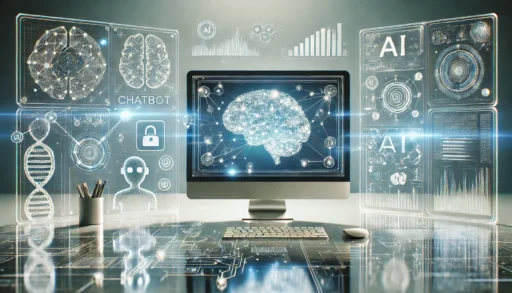How we can use web design and the Internet of Things for Data Visualisation. Free IOT guide!
Table of Contents
How we can use web design and the Internet of Things for Data Visualisation.
The Internet of Things (IoT) has revolutionised the way we collect, analyse, and visualise data from digital devices. IoT refers to a network of interconnected devices that can communicate and exchange data over the internet, without requiring human intervention. This technology has enabled businesses and individuals to gather real-time insights and make data-driven decisions like never before.

One of the key aspects of IoT is its ability to connect different digital devices to websites for data display and analysis. This process involves several stages, from device connectivity and data transmission to data visualisation on web-based platforms. Let’s explore how this often but not necessarily complex process works:
Device Connectivity and Data Collection
The first step in leveraging IoT for data display on websites is connecting digital devices to the internet. These devices can range from sensors, actuators, wearables, to industrial machines and vehicles. Each device is equipped with sensors that collect various types of data such as temperature, humidity, motion, location, and more.
To establish connectivity, IoT devices are integrated with communication technologies such as Wi-Fi, Bluetooth, Zigbee, or cellular networks. This allows them to transmit data wirelessly to central data repositories, cloud platforms or edge storage.
Data Transmission and Processing
Once the devices are connected, they start transmitting data in real-time to designated data storage systems. Cloud-based platforms like Amazon Web Services (AWS), Microsoft Azure, or Google Cloud Platform are commonly used for data storage and processing in IoT applications. These platforms offer scalable storage solutions and powerful data processing capabilities.
Data transmitted from devices is typically in raw or semi-processed formats. It may contain timestamps, device identifiers, and sensor readings. To derive meaningful insights, this raw data needs to be processed, filtered, and analysed in near real-time.
The Internet of Things for Data Visualisation and Web Integration
After data processing, the next step is to visualise this data on websites or web-based applications. Visualisation tools play a crucial role in transforming raw data into interactive charts, graphs, dashboards, and maps that are easy to understand and interpret.
There are several methods to integrate IoT data into websites:
- API Integration: Many IoT platforms provide RESTful APIs (Application Programming Interfaces) that developers can use to fetch real-time data and integrate it into web applications. APIs enable seamless communication between IoT platforms and web servers.
- Web Sockets: For real-time data updates, web sockets can be used to establish a persistent connection between the web browser and the IoT backend. This allows data to be pushed from the server to the client instantly.
- Custom Backend: In some cases, I can build custom backend services to handle data ingestion, processing, and serving APIs specifically tailored for web integration.
Tools and Technologies
Several tools and technologies are commonly employed in the IoT data visualisation pipeline:
- IoT Platforms: AWS IoT, Azure IoT Hub, Google Cloud IoT Core
- Data Storage and Processing: Amazon S3, Google BigQuery, Apache Kafka
- Visualisation Libraries: D3.js, Chart.js, Google Charts, Plotly
- Web Frameworks: React, Angular, Vue.js for building interactive web interfaces
- Backend Services: Node.js, Flask, Django for building API endpoints
Real-World Applications
IoT data visualisation on websites has found applications in various industries:
- Smart Cities: Monitoring air quality, traffic flow, and energy consumption.
- Manufacturing: Predictive maintenance of machines and optimising production processes.
- Healthcare: Remote patient monitoring and real-time health tracking.
- Retail: Optimising inventory management based on customer footfall and buying patterns.
- Agriculture: Monitoring soil conditions, weather, and crop health for precision farming.
Challenges and Considerations
While IoT-enabled data visualisation offers numerous benefits, it also comes with challenges:
- Data Security: Ensuring data privacy and security during transmission and storage.
- Scalability: Handling large volumes of data generated by thousands of devices.
- Interoperability: Integrating data from diverse devices and protocols.
- Data Latency: Ensuring real-time or near real-time data updates for responsive visualisations.
The Internet of Things for Data Visualisation
Connecting digital devices to websites using IoT for data visualisation has transformed how businesses and individuals harness the power of data. This process involves seamlessly integrating IoT devices, transmitting and processing data, and leveraging visualisation tools to gain actionable insights. As IoT continues to evolve, we can expect further innovations in data connectivity, analytics, and visualisation, enabling smarter decision-making and more efficient operations across industries.
If you are thinking about The Internet of Things for Data Visualisation in your business or online project give me a call! I would love to help you on your way.





